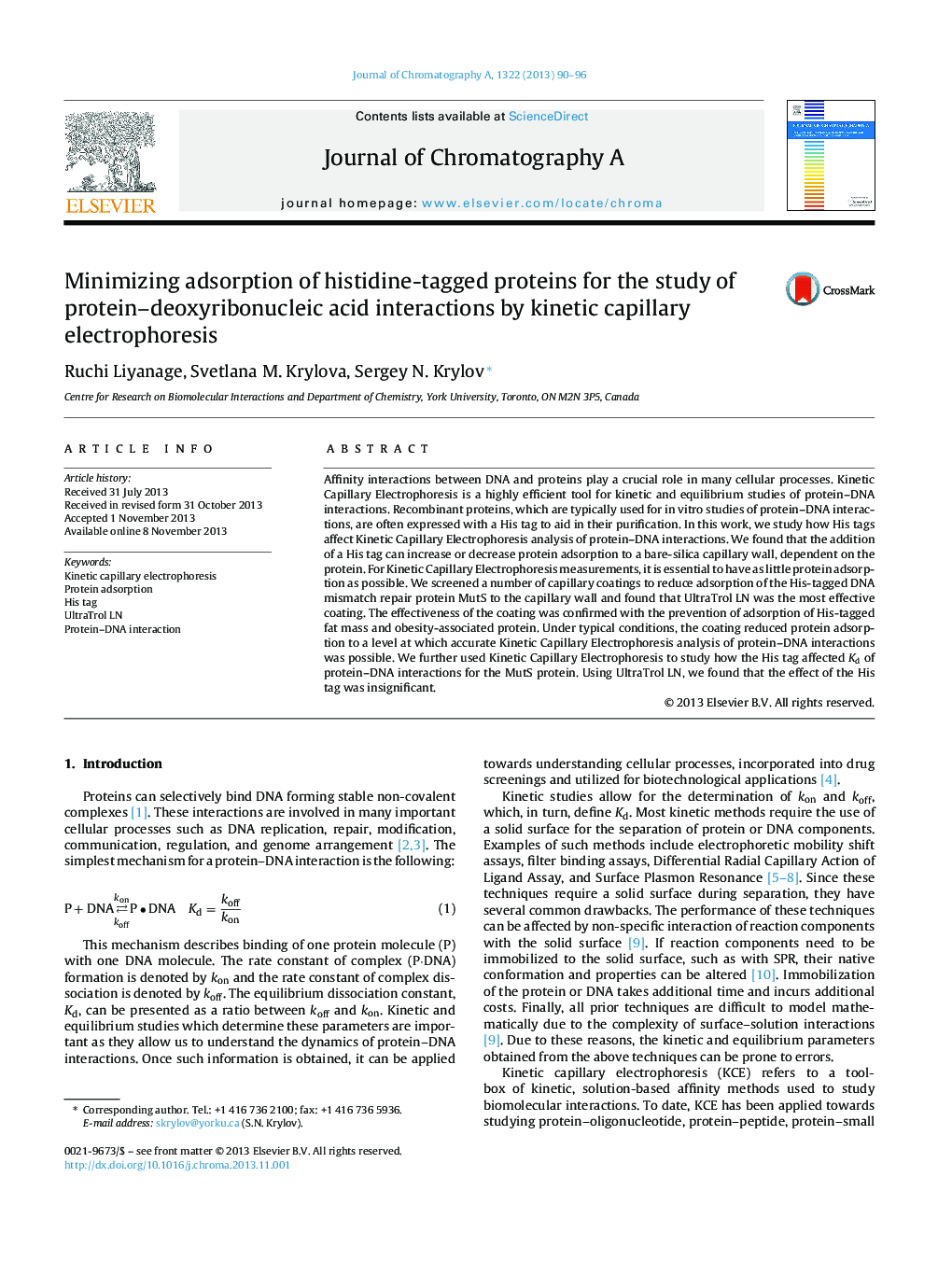| Article ID | Journal | Published Year | Pages | File Type |
|---|---|---|---|---|
| 1201055 | Journal of Chromatography A | 2013 | 7 Pages |
•The effects of His tags on protein adsorption during kinetic capillary electrophoresis.•His tags can increase or decrease protein adsorption onto a bare-silica capillary wall.•UltraTrol LN was found to decrease protein adsorption mediated by His tags.•Neither His tags nor UltraTrol LN influence interaction between MutS protein and DNA.
Affinity interactions between DNA and proteins play a crucial role in many cellular processes. Kinetic Capillary Electrophoresis is a highly efficient tool for kinetic and equilibrium studies of protein–DNA interactions. Recombinant proteins, which are typically used for in vitro studies of protein–DNA interactions, are often expressed with a His tag to aid in their purification. In this work, we study how His tags affect Kinetic Capillary Electrophoresis analysis of protein–DNA interactions. We found that the addition of a His tag can increase or decrease protein adsorption to a bare-silica capillary wall, dependent on the protein. For Kinetic Capillary Electrophoresis measurements, it is essential to have as little protein adsorption as possible. We screened a number of capillary coatings to reduce adsorption of the His-tagged DNA mismatch repair protein MutS to the capillary wall and found that UltraTrol LN was the most effective coating. The effectiveness of the coating was confirmed with the prevention of adsorption of His-tagged fat mass and obesity-associated protein. Under typical conditions, the coating reduced protein adsorption to a level at which accurate Kinetic Capillary Electrophoresis analysis of protein–DNA interactions was possible. We further used Kinetic Capillary Electrophoresis to study how the His tag affected Kd of protein–DNA interactions for the MutS protein. Using UltraTrol LN, we found that the effect of the His tag was insignificant.
